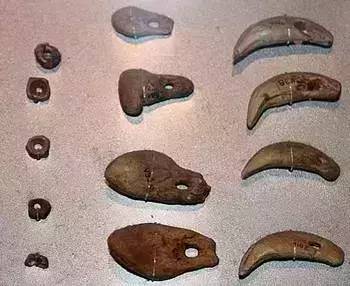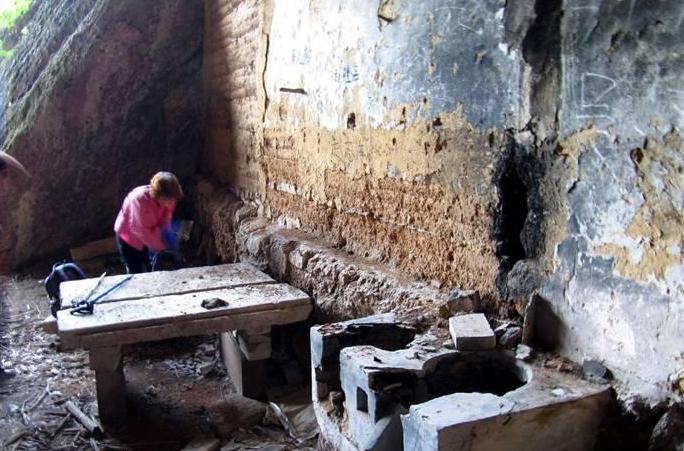The Origin of Chinese Culture Primitive Humans and Tribes
4 min readChina,a country with the highest number of primitive human sites in the world, has not only preserved the most abundant materials related to the origin of human beings but also had a relatively complete evolutionary progress without serious damage.
In the early Paleolithic Period (about 250,000 to 2 million years ago), the ancient ancestors of humans were scattered in a vast area covering Yunnan, Sichuan, Shanxi, Shaanxi, Henan, Hebei, Jiangsu, Anhui, Hubei, Guizhou, Inner Mongolia, Liaoning and Beijing. Several hundred sites of the late Paleolithic Period, dating to about 10,000 to 40,000 years ago, have been found across China.

The process from Yuanmou Man to Peking Man to Upper Cave Man outlined the evolution of early humans in China.
Yuanmou Man, dating back to 1.7 million years ago, was named after Yuanmou, Yunnan, the site where the fossils were discovered. Fossils of two teeth of ancient humans and some stone instruments processed by manpower were unearthed, and lots of coal dust and burned bones were found in relevant clay layers, too. Yuanmou Man is believed to be the earliest human beings so far confirmed within Chinese territory.

The culture sedimentation layer of the caveman site at Longgu Mountain, Zhoukoudian, Beijing, is above 40 m. Archeological study shows that Peking Man started to live in Zhoukoudian about 700,000 years ago and lived there for about 500,000 years. More than 17,000 pieces of stoneware for picking and hunting, including choppers, scrapers and arrowheads, were unearthed from the area. The 6 m-thick ash layer is the vestige of Peking Man’s application of natural fire, which shows that they were able to use fire to cook food, give light, keep themselves warmand drive away beasts, and had mastered the skills of controlling fire. The ability to make and use instruments is an important marker to differentiate human beings from apes.
The usage of fire and eating cooked food helped the physical and mental growth of the primitive humans. Peking Man, while retaining some physical features of apes, could walk upright and had a brain capacity much higher than the ape’s, about 76percent of that of modern humans.In the caves at the top of Longgu Mountain, the site of Upper Cave Man living about 18,000 years ago was discovered. In addition to three pieces of human skulls and some skeleton fossils, bone needles processed through scratching, cutting, grinding and drilling, and holed stone pearls, clam shells and beast tusks and other adornments were unearthed at the site. These indicated that the Upper Cave Man hadmastered the skill of drilling wood to make fire. Manmade fire is deemed to be the beginning of human history. Upper Cave Man had nearly the equivalent brain capacity of modern human beings, as well as a similar physique and appearance.

About 10,000 years ago, the Chinese ancestors entered into the Neolithic Period. Most regions were in the prosperous phase of the Neolithic Period about 7,000 years ago. Above 7,000 discovered culture sites, centered around the valleys of the Yangtze River and the Yellow River, are spread over a vast area. Banpo Site of the Yangshao Culture (dating to about 5,000 to 7,000 years ago) and Hemudu Site of the Hemudu Culture (about 5,300 to 7,000 years ago) are representative of the early Neolithic Period, while Longshan Culture (about 4,000 to 4,500 years ago) is a typical site of the late Neolithic Period.
Banpo Site of the Yellow River basin, located in Banpo village of Xi’ an, Shaanxi, dates back 6,000 years and covers around 50,000 sq m. The houses where the Banpo men lived were mostly half-buried caves built with wood, branches or grass, inwhich there were clay-made cookers and heatable brick bed. More than 200 silos wereused to reserve food. Tools and bones were excavated from the site. So were colorful porcelains with patterns of humans, animals and geometry.
The Hemudu Site, located in Hemudu Village, Yuyao, Zhejiang, has a history of around 7,000 years and is representative of the Yangtze River basins. The stilt style of architecture that the Hemudu men created has for thousands of years been a major architectural form adopted in the areas south of the Yangtze.
In the Neolithic Period, Chinese ancestors widely used stone-made axes, spades, hoes, knives, millstones and other ground stone tools. They also planted millets, rice, cabbage, mustard and other crops, and raised pigs, dogs, oxen, goats, chicken and other livestock.
Xi’ an Banpo Site and Lintong Jiangzhai Site of Yangshao Culture have a public activity place in the central area with small residential rooms around it. Kilns for baking pottery are located near the residential quarters.A moat for protection has been excavated around the village. The public tombs are situated outside the village. The Niuheliang Site of Hongshan Culture has a temple to a goddess and a large altar. These sites indicate the existence at that time of the clan,a kin-based community with families as basic components.A tribe normally consisted of a few clans.
From picking, fishing and hunting to primitive agriculture and livestock husbandry and the resulting settlement and clan society, the profound reform of productivity, production mode and social structure promoted cultural leaps, the blooming of talent and prosperous inventions in this heroic age.








